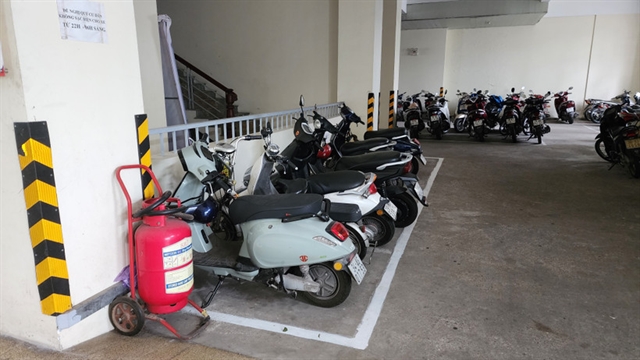 Opinion
Opinion


|
| Hà Quang Hưng, Deputy Director of the Department of Housing and Real Estate Market Management under the Ministry of Construction. VNA/VNS Photo |
HÀ NỘI — Achieving the Government’s target of constructing at least one million social housing apartments by 2030 will demand significant efforts from local authorities. Yet, some cities and provinces have given the task insufficient attention, failing to include social housing development goals in their annual and five-year socio-economic plans. Hà Quang Hưng, Deputy Director of the Department of Housing and Real Estate Market Management under the Ministry of Construction, discussed the issue with VietnamPlus.
Could you update us on the current progress of social housing development across the country?
In the first nine months of this year, 73 new social housing projects were launched nationwide, providing 57,815 apartments. This brings the total number of social housing apartments currently under construction to 132,616.
Localities have so far completed 50,687 out of 100,275 apartments, accounting for 50.5 per cent of the target. By the end of 2025, an additional 38,600 apartments are expected to be completed, raising the total to 89,007 apartments or 89 per cent of the target.
As part of the Government’s project to build at least one million social housing apartments for low-income earners and industrial park workers during 2021–2030, 696 projects with a combined scale of 637,048 apartments are now being implemented nationwide, equivalent to 60 per cent of the overall target. Of these, 165 projects with 116,342 apartments have been completed; 151 projects with 132,616 apartments have started construction; and 380 projects with 388,090 apartments have received investment approval.
Currently, 16 out of 34 localities are on track to fully meet the targets assigned by the Prime Minister, while eight others are only short of 200–300 apartments. The Ministry of Construction has been working closely with local authorities to accelerate progress and ensure that assigned targets are achieved.
Why have many localities failed to meet their assigned social housing targets?
Most localities have yet to prioritise social housing development or integrate it into their socio-economic development plans. Many have also not allocated local budgets for land clearance, compensation, resettlement or technical infrastructure to create land funds for project implementation.
Although sufficient land has been earmarked for social housing development in quantitative terms, the quality of this land remains problematic. Many designated plots are located far from city centres, lack proper connectivity to technical and social infrastructure and therefore cannot be immediately developed. Delays in site clearance have also hindered the handover of land to investors, slowing project implementation.
Following the implementation of the 2023 Housing Law, some developers have proposed converting their mandatory social housing land quotas within commercial housing projects into monetary payments, which has further reduced the available land fund for social housing.
In addition, several social housing projects that have been initiated are either not yet under construction or are progressing slowly. Disbursement rates from the VNĐ120 trillion credit package remain low.
In recent years, administrative streamlining such as the merger of provinces, centrally-governed cities and two-tier local authorities has led to leadership changes at the provincial and departmental levels. This has caused disruptions in direction and coordination in some areas.
Moreover, the number of completed projects has fallen short of targets due in part to investors lacking sufficient financial capacity or experience, resulting in slow implementation. Some projects currently under construction have also been delayed as developers reassess local housing demand following administrative boundary adjustments.
The VNĐ120 trillion credit package for social housing development has been rolled out, but some developers say it is difficult to access. Could you clarify this situation?
At present, there are two main sources of funding under the programme. The Việt Nam Bank for Social Policies provides loans to homebuyers or tenants at a preferential interest rate of 5.4 per cent. Meanwhile, commercial banks offer loans to both developers and individual buyers for purchasing or renting social housing.
The lending conditions are relatively straightforward. Individual buyers only need to present a purchase or lease–purchase contract for a social housing unit. Developers must have an approved social housing project and be recognised as its official investor. Both parties, however, must still meet the creditworthiness and lending requirements set out in banking regulations.
The State Bank of Vietnam has directed commercial banks to cut operating costs and apply digital technologies in management to further lower lending rates under the VNĐ120 trillion package, making the capital more affordable and accessible for developers.
From my perspective, capable developers of social housing projects should not rely too heavily on borrowing. Social housing projects are exempted from land-use fees, which already saves investors a substantial amount in land-related costs.
Moreover, current regulations require that investors contribute 15–20 per cent of the project’s total capital as equity. Once they complete the foundation, accounting for about 30 per cent of total investment, they are permitted to sell apartments under construction. This provides them with cash flow from buyers, who then become the ones taking out loans to pay the developers.
What breakthrough measures will the Ministry of Construction take to promote social housing development in the coming period?
A wide range of solutions is being implemented simultaneously. However, I believe the most decisive factor behind the success of the project to build at least one million social housing units lies in the active engagement of the entire political system and the strong commitment of local leaders. Wherever local authorities and their leaders show real dedication, social housing targets are successfully met.
This is why the Party Central Committee issued Directive No 34-CT/TW on May 24, 2024, on strengthening the Party’s leadership over social housing development in the new situation. The directive requires that social housing development targets be incorporated into political agendas and incldued as key indicators in provincial Party congress resolutions.
With such comprehensive political attention and leadership, I firmly believe that Việt Nam will achieve its goal of developing at least one million social housing apartments by 2030. — VNS




